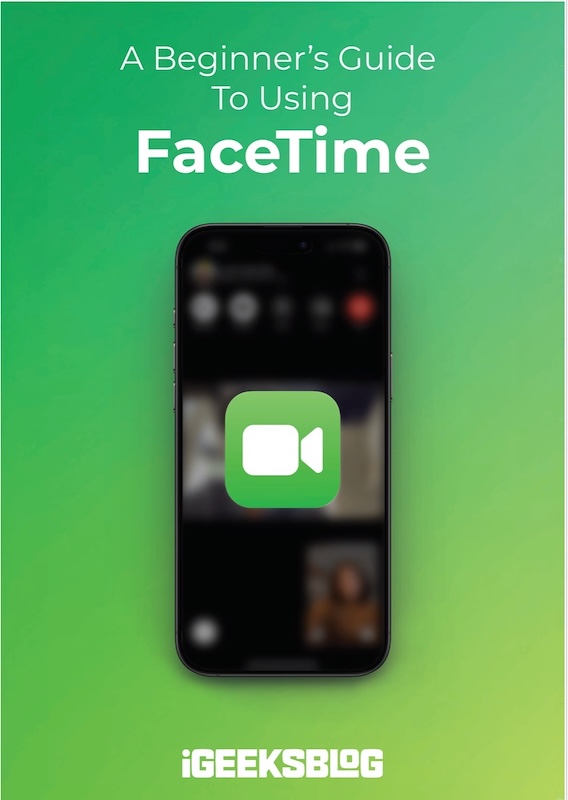
FaceTime Like a Pro
Get our exclusive Ultimate FaceTime Guide 📚 — absolutely FREE when you sign up for our newsletter below.

FaceTime Like a Pro
Get our exclusive Ultimate FaceTime Guide 📚 — absolutely FREE when you sign up for our newsletter below.
Stuck in login loops that refuse to clear, pages half loading, spinner just sitting there? The fix is simple, clear Safari browsing data on your iPhone today.
Safari feel slow on your iPhone? Stuck in login loops that refuse to clear, pages half loading, spinner just sitting there? The fix is simple, clear Safari browsing data on your iPhone today. Removing Safari history, cache, and cookies is basic digital hygiene. It clears built up site data that drags pages, strips tracking cookies that nibble at privacy, and often kicks stubborn loading errors back into line. Quick reset.
This guide covers every method to safely clear Safari data. You’ll learn when to use each approach, what data gets removed, and what stays protected, including saved passwords in iCloud Keychain and passkeys. Plus troubleshooting tips for common issues.
Understanding what you’re clearing helps you make informed choices about your iPhone’s Safari data:
Before clearing Safari data on iPhone, understand what will change:
The following three methods let me choose exactly which Safari bits get tossed from my iPhone or iPad. Pick the method that fits your privacy comfort level and the way you browse. I do this when Safari feels sluggish or pages half-load, and the fix lands fast. Each method needs only a couple of taps, then the change is live right away, no reboot, no waiting.


Use this method to remove tracking data and cached files while preserving your browsing history.


This deletes cookies and cached data, while keeping your browsing history intact for future reference.
Target specific problematic websites without affecting other stored data:

After clearing data for that site, reload the page in Safari to see immediate improvements in loading speed and functionality, especially on heavier sites. If you want, you can even customize Safari to your preference in a few simple steps.
If the Clear History and Website Data button looks greyed out and does not respond, Screen Time restrictions are usually blocking this change.
Here’s how to fix it:


After making this change, return to Settings → Apps → Safari. The Clear History and Website Data button should now be active and responsive.
If maximum privacy is the goal, Safari includes a switch to block all cookies. Proceed with care, though, because this choice can have real side effects.

Important Warning: Turning on Block All Cookies breaks features on many websites. Sign-ins fail, shopping carts forget items, and site preferences do not stick between visits.
Better Alternative: For most people, keep Block All Cookies off, and leave Prevent Cross-Site Tracking enabled. This limits advertising trackers while still allowing the essential cookies that keep websites working properly.
Regularly clearing Safari browsing data helps keep an iPhone responsive and protects personal privacy. Use a full wipe when a fresh start is needed, or clear only problem sites when a smaller fix makes sense. Either route is quick and yields smoother pages, fewer reloads, and fewer tracker leftovers.
Make Safari cleanup part of a monthly routine. With less old data, the phone feels snappier, pages open faster, and privacy settings hold. Control stays with the user, not with leftover cookies.
Pair this with basic upkeep. Update to the current iOS release, review storage in Settings to free space, and remove unused apps. Together, these steps keep performance steady and reduce odd site glitches.
FAQs
Most of the time, Screen Time content restrictions are the cause. Go to Settings → Screen Time → Content & Privacy Restrictions → Content Restrictions, then set Web Content to Unrestricted Access. The button should become available again after returning to Settings → Safari. If Screen Time is off, check for device management or parental profiles that enforce the same block.
No. iCloud Keychain passwords, Autofill details, and bookmarks are stored separately. Clearing history, cache, and cookies does not remove them, and saved logins and favorites remain across devices signed in to the same Apple ID.
Safari on iPhone does not include a cache only control. The closest option is Settings → Safari → Advanced → Website Data → Remove All Website Data, which clears cache and cookies while preserving browsing history. Individual site entries can also be removed from this screen.
Go to Settings → Safari → Advanced → Website Data. Search for the site, swipe left on its entry, then tap Delete. Only that site’s cookies and cache are removed without affecting others.
Often, yes. Clearing data can fix slow pages, login failures, and display glitches. Stale cache and conflicting cookies cause many of these issues, and a reset forces fresh content to load.
Private Browsing avoids saving history, cookies, and cache during the session, useful for temporary tasks or sensitive research. Manual clearing removes the buildup left from regular browsing and can improve performance.
Screen Time Content & Privacy Restrictions can disable the Clear History and Website Data button. This is common with parental controls or personal usage management and requires the Screen Time passcode to change settings.
Read more: